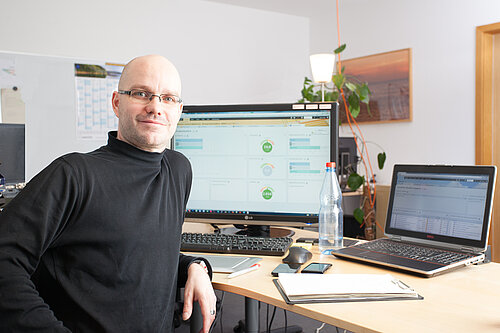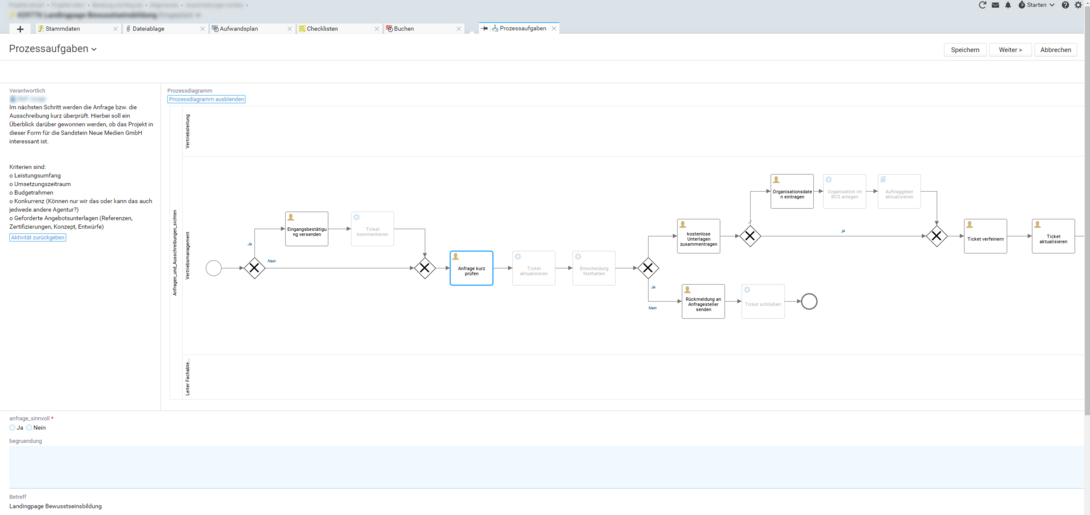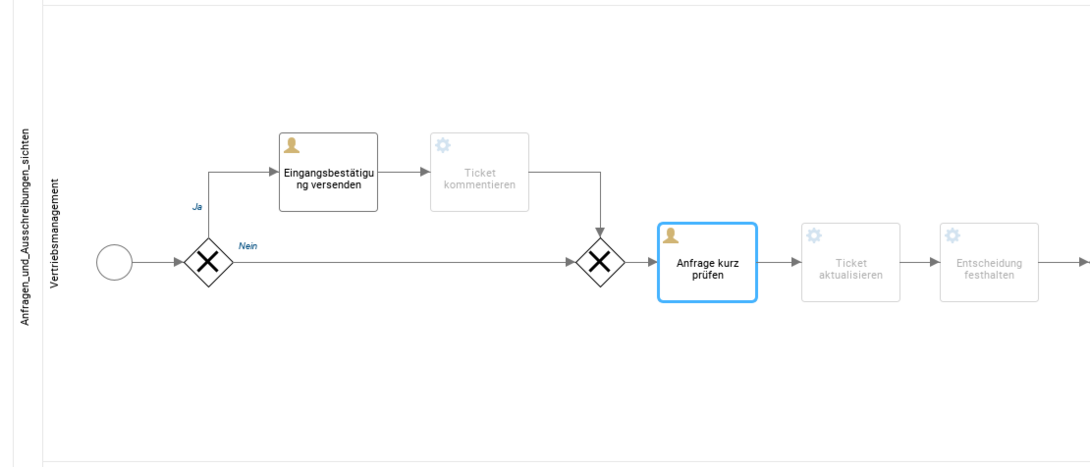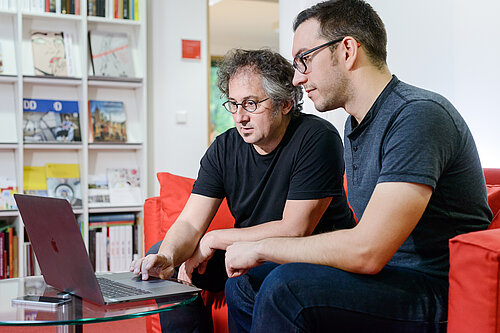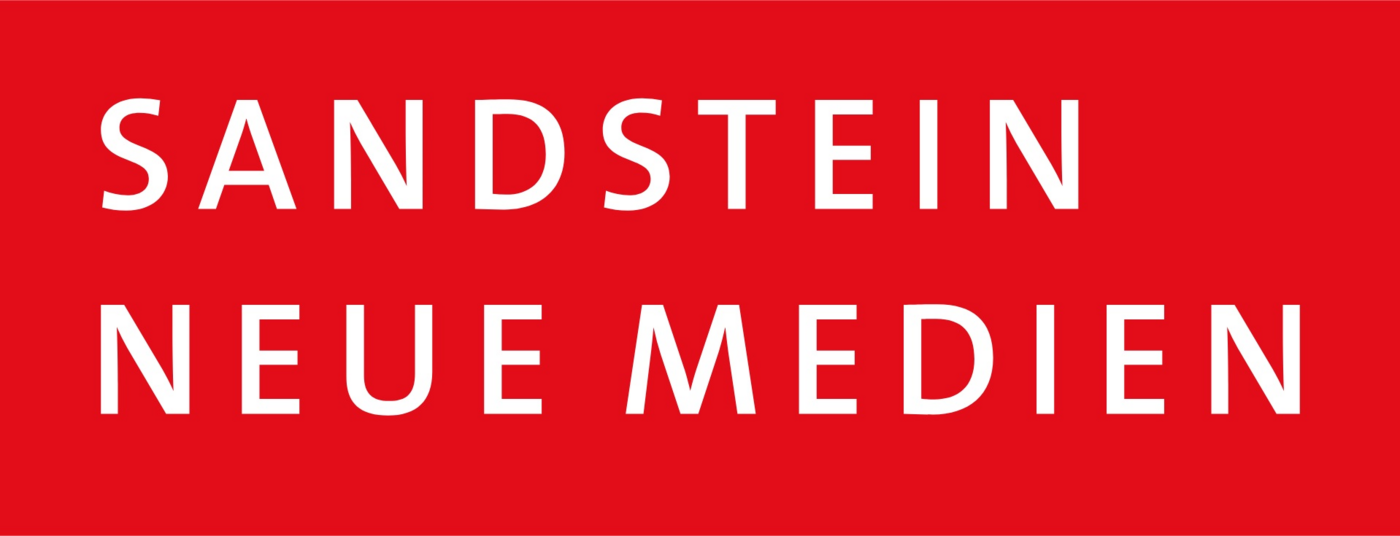Powerful, comprehensive, reliable
User report from Sandstein Neue Medien
Projektron BCS was a real stroke of luck for us. In 2015, we were looking for software to support our multi-project management. We found the Univerasal solution for our company!
All-round service for the perfect appearance
Sandstein Neue Medien GmbH was spun off in Dresden in 2005 from Sandstein Verlagsgesellschaft, which was founded in 1990. As early as 1996, we had established a division for electronic communication within Sandstein Verlag. Among other things, we created the first version of the website of the city of Dresden, www.dresden.de. Today, in addition to 28 permanent employees, we are also supported by a number of freelancers. We all work with Projektron BCS.
We make sure that our customers leave a unique impression on the World Wide Web. To this end, we design websites and Internet portals based primarily on TYPO3 and set up online stores based on Magento. We also develop individual software solutions for our customers, for example the online continuing education databases for Berlin-Brandenburg and Mecklenburg-Vorpommern. Our team realizes projects with the programming languages PHP and JavaScript. By using frameworks such as CakePHP or VueJS, we also ensure secure, efficient and standardized web programming for PHP development. Whether we use standard solutions or program individually, we decide together with our customers based on their requirements.
As a digital agency, we take care of all aspects from content concept and web design to technical implementation in the form of programming and data management. As additional services, we offer, among other things, target group-specific training in the use of editorial systems such as TYPO3 and reliable support. We specialize in the barrier-free design of websites, as our customers include numerous city councils, state administrations, ministries and other public institutions and organizations.
Increasing number of projects - more elaborate resource planning
Depending on the complexity, scope and individual requirements, our projects have very different durations, which can range from a few weeks to several years and long-term support. Some of our first customers have even remained loyal to us since 1996 and continuously rely on our expertise.
The average project duration is about one year. Our projects are divided annually into about 50 time-limited project orders from customers and 50 long-term operating contracts, the support for which requires a greatly varying intensity.
We had previously worked with different software products. For example, we used one software only for quotation and invoicing. For organizing smaller tasks, we had a separate ticket system, and later we also tried out an electronic planning board. However, this did not prove successful in the long run.
We planned larger projects with MS Project. The day-to-day organization and personnel planning became increasingly challenging and time-consuming. When assigning smaller projects and daily tasks, it was time-consuming to estimate which employees still had how much free capacity. In MS Project, flexible working time models and varying availabilities could only be mapped in a very complicated and cumbersome way. Since we are a family-friendly company and many of our employees work part-time, keeping track of resource utilization was very difficult and resource management was a daily challenge.
To BCS users in record time
We used the agency management software ais to manage working time models, attendances and absences, and all personnel and organizational administration. In 2015, a major update would have come our way there. Just at that time, our managing director, Mr. Pieper, was in contact with the managing director of another company that was implementing a project management software called Projektron BCS. During the conversation it quickly became apparent that BCS could also be an excellent solution for us.
The introduction at our company was almost rapid. In November 2015, I attended the project manager training at Projektron GmbH in Berlin. I was impressed because I was able to take a direct, hands-on look at the software and didn't have to get an idea of the product from marketing materials alone. The project planning and resource planning functions convinced me immediately.
Less than two months later, at the beginning of 2016, we introduced BCS in our company. We immediately introduced the functions for project planning, the ticket system, time recording, vacation management and, of course, the longed-for resource management for all our employees.
At first, we took it upon ourselves to perform important processes such as daily time recording in our legacy system and BCS in parallel, but after only two days we realized: "That's unnecessary, BCS works!" We wrote our quotations
with the old program until our CI layout was mapped into the quotation creation module in BCS. Projektron did this for us very quickly.
We introduced the invoicing module the following year. The contract management module and process modeling with BPMN were also added over the course of our BCS usage.
We also used the CRM functions of BCS extensively from the beginning. We coupled the software with our telephone system via the CTI integration and also use the e-mail import and, in the meantime, the appointment synchronization with Outlook.
Maximum customizability guarantees everything in view
We have long used BCS for all of our company's business processes - from quoting to invoicing. Only the modules on agile development methods are not used, as our way of working is based on classic project management according to the IPMA standard.
From day one, vacation management and resource management with data updated in real time provided greater clarity and speed in our organizational processes. Every employee knows at a glance how many vacation days or "child sick days" are still available. If a vacation is canceled, the corresponding capacities are immediately available again in resource planning thanks to live data. If a team member is absent at short notice due to illness, I have a central overview of all the necessary information to compensate for the absence.
The ticket system in BCS has become an indispensable part of our everyday project work. We record every minute of our working time on tickets. We have therefore had many views and subviews customized to our needs.
We appreciate the flexibility and maximum customizability that BCS offers. In fact, we have also had many specifications done:
- For example, in order to be able to prioritize our projects in detail, we have created 100 different project priorities in BCS, so that almost every project can be given an individual prioritization level and every employee in the company can see at a glance which tasks currently have priority.
- In addition, we have set up fields that show immediately on each ticket whether it is a Matomo, Typo3, Magento or otherwise based project and with which product version the respective customer project was implemented.
- When assigning tickets, we often set the processing start date to a point in the future, so that the planned effort can be taken into account immediately in the resource utilization.
As part of our operating contracts, we rely on close coordination and cooperation with our customers. BCS offers the ideal conditions for this with its flexible guest licenses. Customers can see the project overview and are thus informed about the current status. In addition, they can view the ticket comments of our team and write ticket comments themselves to provide us with necessary information. Transparency is created by the fact that customers have an overview of their available support budget at all times. When implementing the support portal, we closely followed the example of Projektron GmbH.
With BCS to automated business processes
For some time now, we have been familiarizing ourselves with the possibilities of the BPMN process designer in BCS. We map many of our internal business processes with workflows and checklists in BCS. Based on these checklists we formulated alpha versions of some processes, which we would like to model successively with the process designer in BCS after appropriate elaboration and revision.
In addition, we transferred processes that we had previously designed in SAP Signavio to BCS. In order to proceed in a planned manner, we had a process map created in advance. In our core processes, i.e. in the actual project management, we will not use any automated processes. However, we want to automate our internal management and support processes as much as possible.
As a first step, we ventured into our process of "sifting through RFQs and RFPs": If an inquiry from a prospect is received by one of our employees - be it in sales, team assistance, management, support or a project manager - or if someone discovers a promising lead, BCS automatically generates a new prospect in the "External" area with all previously available information and, if applicable, existing documents, creates a ticket and assigns it to a suitable agent in sales. This person can then decide whether it is worth pursuing the inquiry or the lead further.
While this process is currently in the test phase, we already have other ideas that we would like to realize with the BPMN module. We are currently still mapping our onboarding and offboarding processes as well as the processes "Prepare for quotation" and "Quotation preparation" with the help of checklists. These and many other processes in our process maps are also to be translated into BPMN processes in the near future. We have already started implementing the "technical purchasing" process.
In the medium and long term, we want to go far beyond the mapping of our currently existing processes. Two desired goals that we would like to implement soon with the BPMN process manager are as follows:
- If a new version, for example of Matomo, is released, BCS should identify all active customer projects in which Matomo is stored as a project standard and automatically generate tickets to our employees - to update the version at these customers.
- If one of the hosting providers whose services we use for our customer projects reports an upcoming maintenance window, we want to use BCS to automatically filter out and inform all those customers who will be affected by the maintenance and the associated planned downtime.
Conclusion: Powerful, comprehensive, reliable
We are thoroughly satisfied not only with BCS, but also with the service provided by Projektron GmbH. In the meantime, I have attended almost all of the training courses offered by Projektron GmbH and have passed on the knowledge I gained there internally to our employees. We even had a user consultant on site to train several of our employees in the use of the software.
As part of our onboarding process, every new employee, whether an intern or project manager, receives an appropriate introduction to BCS. For a long time now, this has been done in parallel with the general familiarization with our company and our way of working, because BCS is the central tool for all tasks in the daily work routine.
I have enthusiastically participated in three user conferences so far prior to the Corona pandemic and was able to obtain valuable suggestions and practical tips for our own BCS use in direct exchange with other participants.
We always eagerly await new BCS versions, and we usually update very quickly after a new release. Here we see another fantastic advantage of BCS - it is maximally customizable and yet easily update-compatible.
We don't want to miss the possibilities of BCS anymore! The cross-building availability of live data that Projektron BCS provides to all team members leads to clearer, faster and more informed decisions in all aspects of our day-to-day project work and internal organization.

